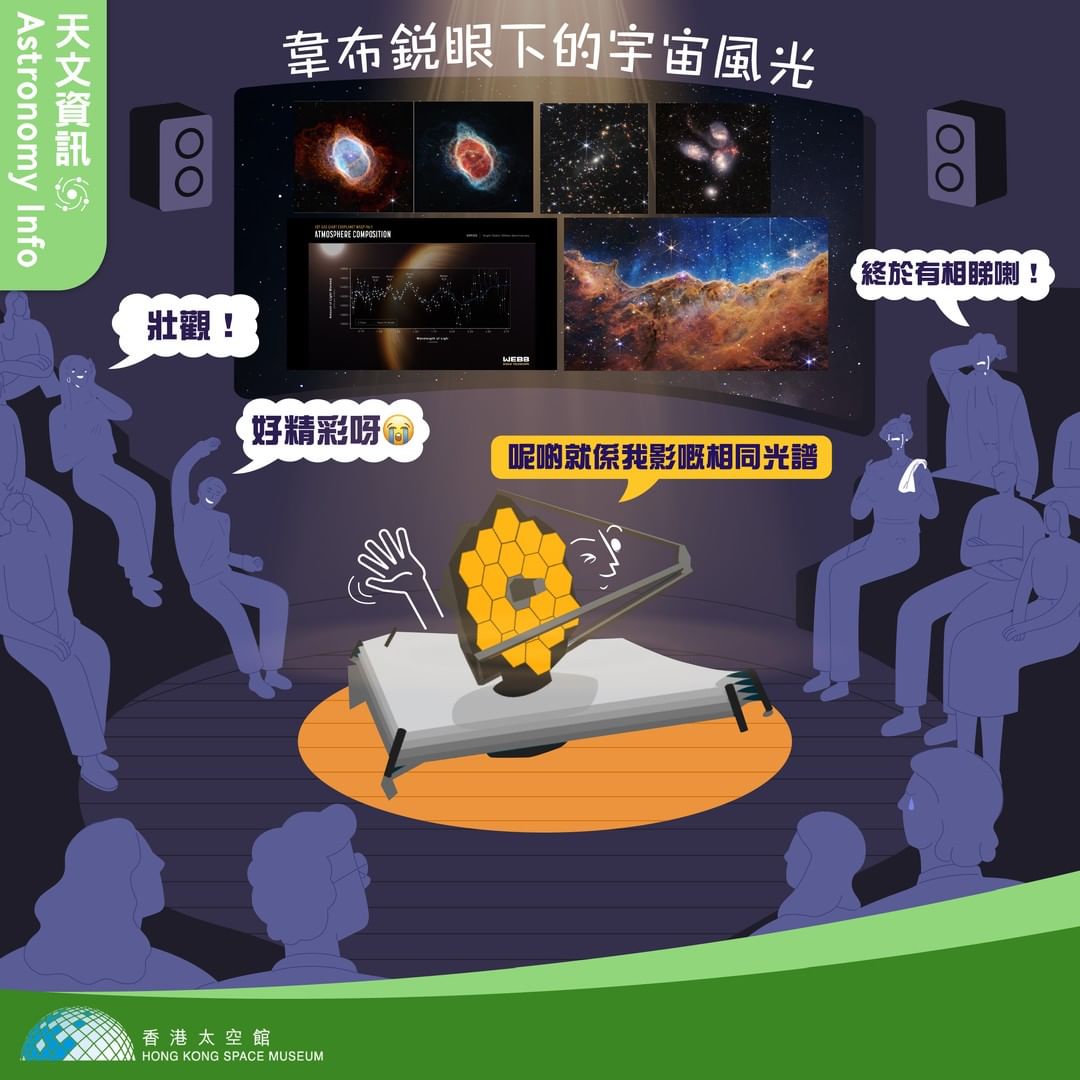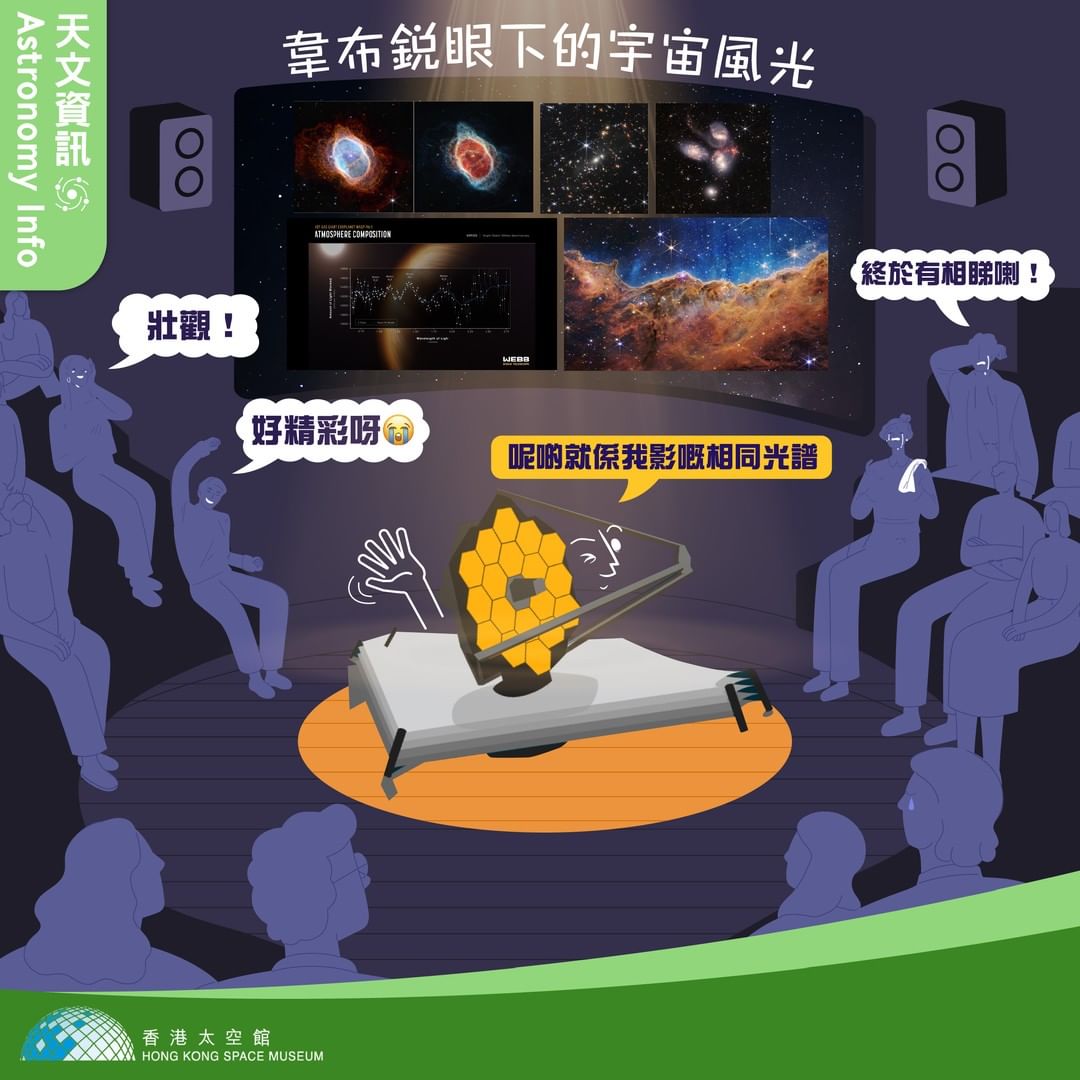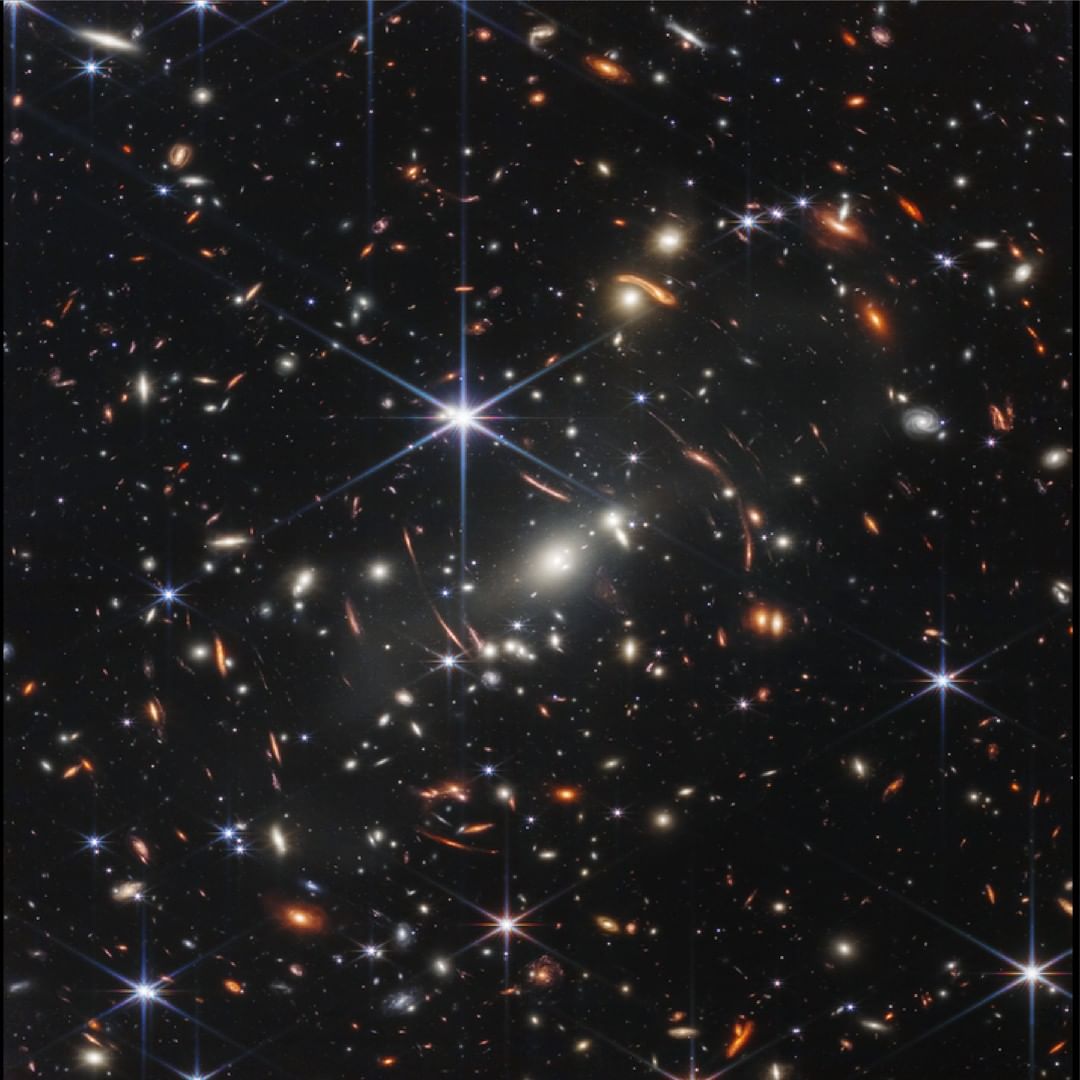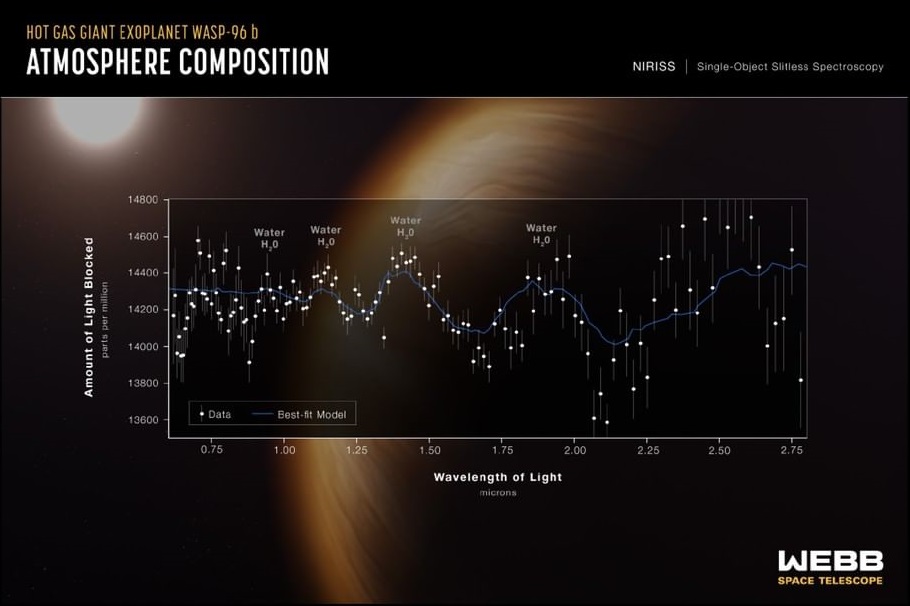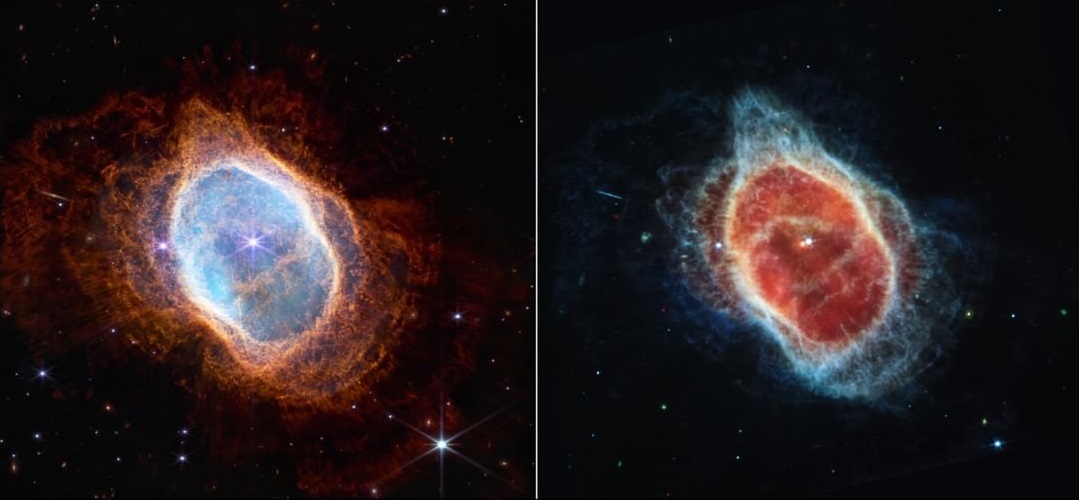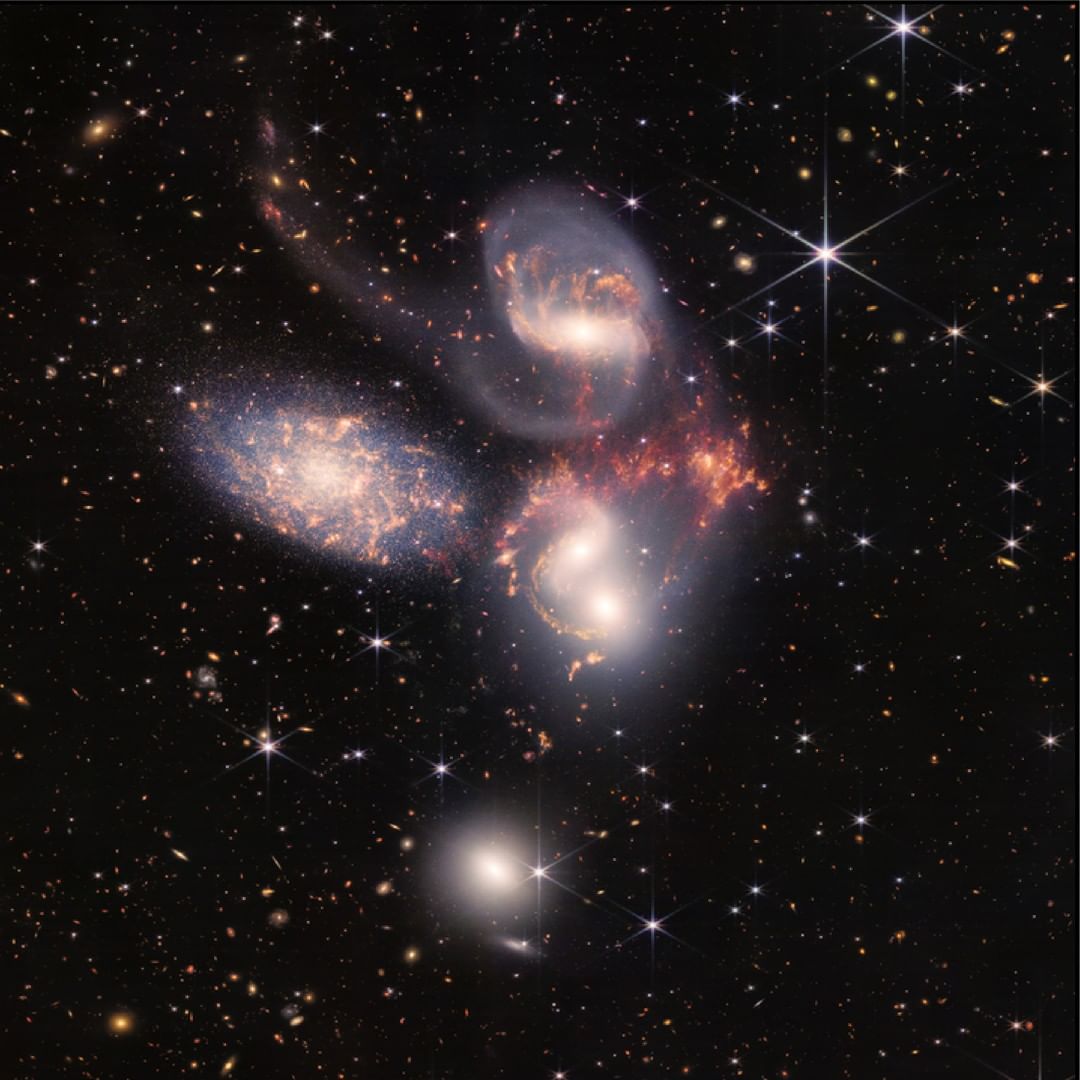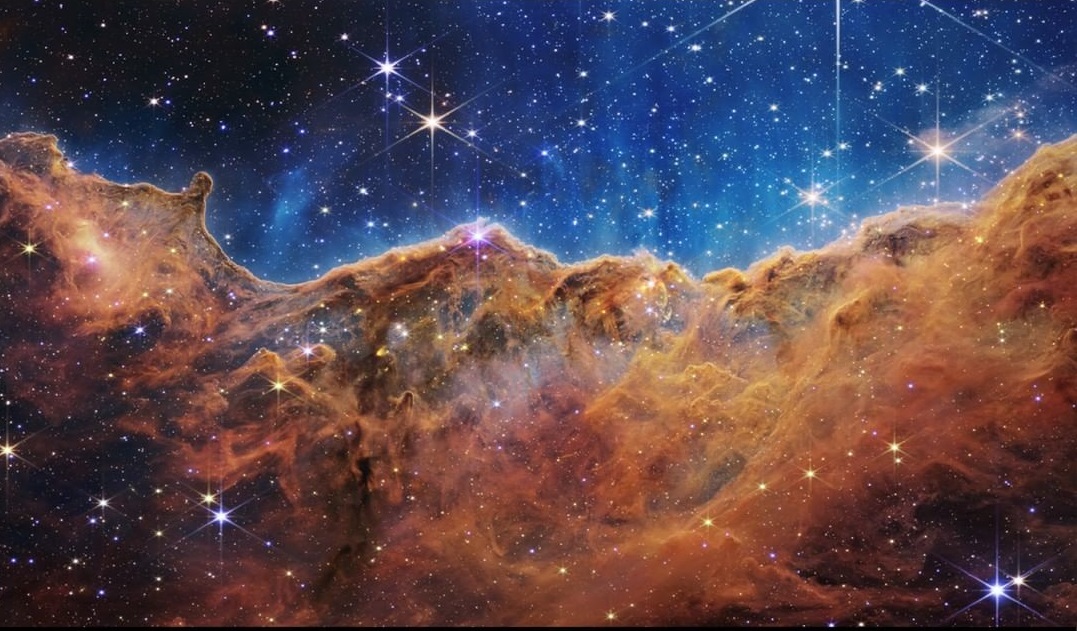The biggest, the most advanced and the most expensive James Webb Space Telescope (Webb) is fully operational! Astronomers have received the first wave of scientific data from its vantage point, 1.5 million km away from us.
The first image, also known as "Webb's First Deep Field", was unveiled by US President Joe Biden on 11 July US time. The image captured the sky centred at the galaxy cluster SMACS 0723. Thousands of galaxies, including the faintest objects ever observed in the infrared, were captured by Webb's NIRCam. Some of the galaxies are more than 13 billion light-years away. Hubble has taken an image of the same field but Webb has revealed more details and can see galaxies that are further away.
Last night (12 July, Hong Kong time), NASA continued to release the rest of the first batch of images and spectra. With utmost sharpness, clarity and unprecedented details, these images simply blew us away.😭
The images are:
Exoplanet WASP-96 b: a gas giant exoplanet located approximately 1,150 light-years away in the constellation of Phoenix. WASP-96 b, at half of Jupiter's mass, orbits its star WASP-96 once every 3.4 days. Webb captured the spectrum of WASP-96 b, allowing us to study its atmospheric composition. For the first time, we've detected evidence of clouds in this exoplanet's atmosphere.
Southern Ring Nebula: at a distance of about 2,500 light-years away, it's a planetary nebula formed by the cloud of gas "blown" from a dying star at the centre. Webb's IR image disclosed details of the nebula that were previously hidden from astronomers. Webb has revealed for the first time that the central star is cloaked in dust.
Stephan's Quintet: a group of five galaxies "dancing" at about 290 million light-years in the constellation of Pegasus. Webb reveals never-before-seen details on how the galaxies interact: star formation, gas exchange, or even the outflows driven by a central black hole.
Carina Nebula: one of the largest and brightest nebulae in the sky. Webb's IR eye peers through the dust to unfold this "Cosmic Cliffs": a cosmic nursery filled with baby stars where ultraviolet light and stellar winds shaped a 7-light-year-height colossal walls of dust and gas.
There is no doubt that this batch of scientific data showcases Webb's excellence. The exploration of every phase of the Universe has already begun. The discoveries from Webb will challenge theories and reveal sights yet unseen.
To know more: https://www.nasa.gov/webbfirstimages
Images credit: NASA, ESA, CSA, STScI


